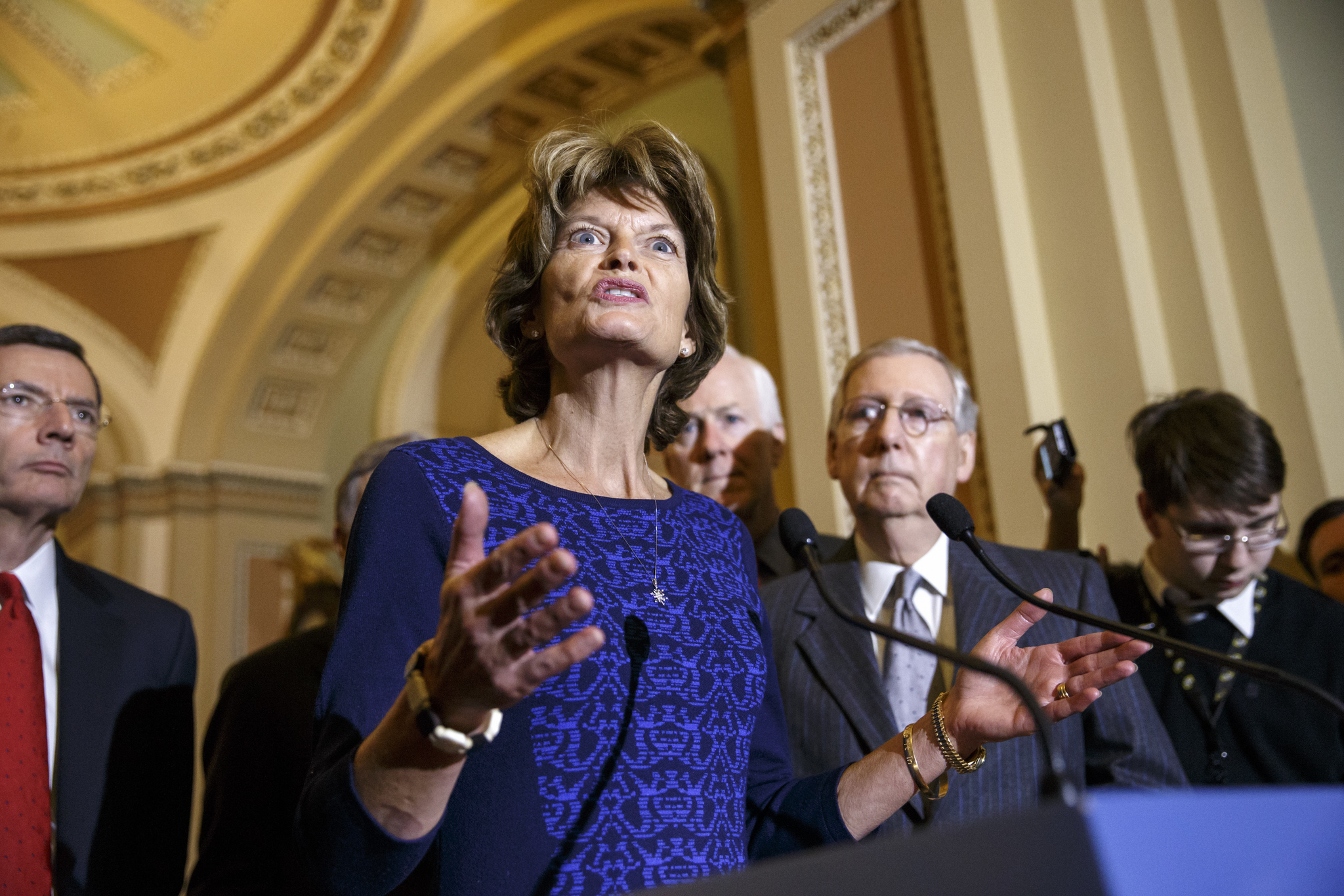ANCHORAGE — Former U.S. Sen. Frank Murkowski in 2001 gave a speech urging colleagues to approve oil drilling in America’s largest wildlife refuge. The Alaska Republican held up a blank sheet of paper to illustrate his point.
The field of white, he said, was all you could see each winter on the coastal plain of the Arctic National Wildlife Refuge, implying that such a barren landscape would not be harmed by oil rigs.
Sixteen years later, Murkowski’s daughter is trying again. U.S. Sen. Lisa Murkowski is sponsoring legislation to open the refuge that takes up Alaska’s northeast corner and is larger than West Virginia and Connecticut combined. With a Republican Congress and president, she’s hopeful that the timing is right.
“If you ask me,” she told The Associated Press by phone from Washington, D.C., “it’s always been a good time to open it.”
The coastal plain is not the apex of Alaska scenery, but it’s a nursery for polar bears, muskoxen and the vast Porcupine Caribou Herd. Migratory birds from all 50 states nest there. Few people visit, but the coastal plain is part of a refuge that’s the very definition of wilderness: no roads, no campgrounds, not even any established trails. Environmental groups are planning strategies to keep drill rigs out.
“There are some places that are just too sacred to drill,” said Alli Harvey, a Sierra Club campaigner in Anchorage.
Legislation signed by President Dwight Eisenhower in 1960 created the Arctic National Wildlife “Range.” Congress in 1980 changed the name, expanded the refuge to 30,136 square miles and declared much of it wilderness.
However, recognizing the potential for oil, Congress also declared that 2,300 square miles of Beaufort Sea coastal plain were to be studied for natural resources. Another act of Congress can open it to drilling.
The Arctic refuge has since been one of Alaska’s great development-versus-environment issues, causing a stalemate that has lasted more than 36 years.
Congress approved drilling in 1995, but President Bill Clinton vetoed it. Drilling has been a non-issue for the past eight years. President Barack Obama instead urged Congress to formally designate the coastal plain as wilderness.
Members of the Gwich’in Steering Committee, an Alaska Native organization tied to U.S. and Canadian villages south and east of the refuge, were grateful. They say their subsistence lifestyle, and identity, are closely tied to a healthy Porcupine Caribou Herd, which uses the coastal plain for calving.
“This place is so special,” said Bernadette Demientieff, executive director. “We have to keep some places as is. We don’t need to be tearing into everything.”
Most Alaskans feel otherwise. Politicians of all stripes jeopardize their re-election chances if they don’t endorse “opening ANWR.”
The prospect is just 60 miles from the trans-Alaska pipeline, which has plenty of space for moving more oil toward refineries. The pipeline currently operates at around one-quarter capacity because production from Alaska’s major oil fields has declined since the late 1980s. Alaska state government, which runs on oil revenue, is blowing through savings, hit hard by the double-whammy of lower production and low oil prices.
The U.S. Geological Survey estimates the coastal plain of the refuge holds 10.4 billion barrels of oil and possibly as much as 16 billion barrels. It’s North America’s greatest prospect for conventional oil production, according to Sen. Lisa Murkowski.
The bill sponsored by Murkowski and other Alaska congressional delegates would limit infrastructure — drilling pads, roads and pipelines — to 2,000 acres. Drilling advocates say restrictions already in place will protect caribou. No infrastructure would be allowed in areas crucial to caribou survival, such as the ice fields and uplands where caribou retreat to escape blood-sucking insects.
Alaska already has demonstrated at other North Slope oil fields that development and caribou can co-exist, Murkowski said. Extended-reach drilling, reaching oil from a pad nearly 8 miles away, is now possible.
“Think about how far the technologies that we have put in place have taken us, from the early days of Prudhoe and how we operated,” she said. “What is coming about now on the North Slope in terms of how we access the resource — it’s a world apart.”
But environmentalists say the 2,000-acre figure is misleading. It’s akin to assessing the amount of space in a room affected by a table by measuring only the area where the legs touch the floor, said Kristen Miller, conservation director for the Alaska Wilderness League. Gravel mining, seismic testing and air pollution will take a toll, she said. Oil is spread across the entire coastal plain, she said, and infrastructure will be too.
“You will have a spider web of pipelines, roads and everything else it takes to support these intensive activities,” Miller said.

